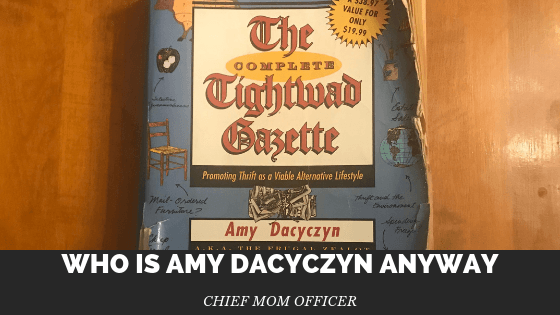Amy Dacyczyn is a name that resonates with many who embrace the ethos of thrift and frugality. For those unfamiliar, Dacyczyn is best known for her groundbreaking role as the founder of “The Tightwad Gazette,” a newsletter that burgeoned into a cultural phenomenon during the 1990s. This exploration will delve into her net worth, her early life and education, her career, fascinating tidbits about her life, as well as the controversies that have swirled around her and her ideas.
Net Worth
Estimates of Amy Dacyczyn’s net worth vary significantly, largely due to the ephemeral nature of publishing and the secretive aura surrounding financial discussions in personal finance circles. At her peak, it’s approximated that she amassed a net worth in the range of $1 million. This figure encapsulates not only her earnings from her newsletter and subsequent books but also the revenue generated through speaking engagements and workshops. Her ability to turn frugality into a lucrative career is a testament to her adeptness at monetizing her passion for saving money.
Early Life and Education
Amy Dacyczyn was born in 1968 in a small town in Maine. Growing up in a family where resourcefulness was not merely encouraged but essential, her formative years were steeped in the values of hard work and financial prudence. Raised by parents who instilled the importance of living within their means, Amy learned the merits of budgeting and frugality from an early age.
After completing high school, she pursued her education at the University of Maine, where she majored in Electrical Engineering. This technical background equipped her with analytical skills, which she later applied when devising practical strategies for saving money and maximizing resources. Her education laid the groundwork for her later endeavors in disseminating expert advice on frugality and personal finance.
Career
Following her educational journey, Dacyczyn faced a pivotal moment in her career. After marrying and starting a family, she found herself grappling with the challenge of making ends meet on a single income. This experience sparked her passion for frugality, propelling her into the spotlight as a figurehead of the anti-consumerism movement.
In 1990, she launched “The Tightwad Gazette,” a newsletter wherein she shared an array of money-saving tips, household hacks, and clever ideas to help readers manage their finances more efficiently. The newsletter quickly gained traction, transitioning into a published book series that expanded her reach and influence. It resonated with many who were seeking practical advice on how to live well while spending less.
Dacyczyn’s ability to engage her audience with relatable anecdotes and actionable insights contributed significantly to her success. Her books, which include “The Tightwad Gazette: Promoting Thrift as a Viable Alternative Lifestyle,” became bestsellers. With their practical focus on frugality, they appealed to a wide demographic, establishing Dacyczyn as not just a writer but a household authority on thriftiness and personal finance.
Interesting Facts
Beyond her accolades in the realm of personal finance, Dacyczyn harbors a wealth of interesting facts that add depth to her persona. For instance, she famously implemented a ‘no-spend’ challenge for her family, wherein they abstained from unnecessary purchases for an entire year. This radical experiment not only deepened her understanding of frugality but also served as an inspiration for her readers, illustrating the profound impact of mindful spending.
Dacyczyn is also a notable proponent of the notion that living simply doesn’t equate to living poorly. She often emphasizes the creative aspect of frugality, presenting it as a lifestyle choice infused with freedom. She relishes in finding joy and fulfillment through creativity rather than consumption. Her philosophy has sparked a resurgence of interest in minimalism and sustainable living, breathing fresh air into discussions about consumer culture.
Controversy
Despite her acclaim, Dacyczyn has not been without her share of controversies. Critics have sometimes framed her ideas as overly restrictive or impractical for the average person. Some have suggested that her extreme frugality might alienate those who struggle to meet even basic needs. While her methods resonate with many, detractors point out that her approach may not be universally applicable, especially in today’s complex economic landscape.
Additionally, discussions about her advocacy for frugality can sometimes verge into areas of classism. The dichotomy between those who can afford to be frugal and those who cannot highlights an uncomfortable reality—frugality is often a privilege that not everyone can attain. This creates an interesting juxtaposition of a lifestyle that many yearn for while acknowledging that not all can achieve it due to external circumstances.
Conclusion
Amy Dacyczyn remains a compelling figure in the discourse surrounding personal finance and frugality. Her journey from a frugal lifestyle to becoming a successful author and speaker illuminates the broader questions surrounding consumerism, resourcefulness, and financial responsibility. Her legacy is underscored by an enduring curiosity about how we engage with money and the values we uphold in our respective lives.
Ultimately, Dacyczyn’s life and career invite reflection on the joys of living within one’s means and the profound impact that thoughtful spending can have on our lives and wellbeing. As discussions about money continue to evolve, her work serves as a guiding beacon towards a more sustainable and mindful approach to finance.




